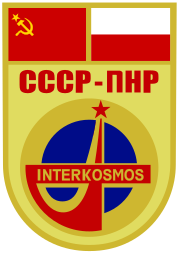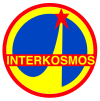
The Salyut programme was the first space station programme, undertaken by the Soviet Union. It involved a series of four crewed scientific research space stations and two crewed military reconnaissance space stations over a period of 15 years, from 1971 to 1986. Two other Salyut launches failed. In one respect, Salyut had the space-race task of carrying out long-term research into the problems of living in space and a variety of astronomical, biological and Earth-resources experiments, and on the other hand, the USSR used this civilian programme as a cover for the highly secretive military Almaz stations, which flew under the Salyut designation. Salyut 1, the first station in the program, became the world's first crewed space station.

Soyuz 18 was a 1975 Soviet crewed mission to Salyut 4, the second and final crew to man the space station. Pyotr Klimuk and Vitaly Sevastyanov set a new Soviet space endurance record of 63 days and the mark for most people in space simultaneously (seven) was tied during the mission.

Soyuz 12 was a September, 1973, crewed test flight by the Soviet Union of the newly redesigned Soyuz 7K-T spacecraft that was intended to provide greater crew safety in the wake of the Soyuz 11 tragedy. The flight marked the return of the Soviets to crewed space operations after the 1971 accident. The crew capacity of the capsule had been decreased from three to two cosmonauts to allow for pressure suits to be worn during launch, re-entry and docking. It was the first time pressure suits were used for reentry since the Voskhod 2 flight.

Soyuz 21 was a 1976 Soviet crewed mission to the Salyut 5 space station, the first of three flights to the station. The mission's objectives were mainly military in scope, but included other scientific work. The mission ended abruptly with cosmonauts Boris Volynov and Vitaly Zholobov returning to Earth after 49 days in orbit. The precise reason for the early end of the mission was the subject of much speculation, but was reported to be an emergency evacuation after the Salyut atmosphere developed an acrid odor.

Soyuz 29 was a 1978 crewed Soviet space mission to the Salyut 6 space station. It was the fifth mission, the fourth successful docking, and the second long-duration crew for the orbiting station. Commander Vladimir Kovalyonok and flight engineer Aleksandr Ivanchenkov established a new space-endurance record of 139 days.
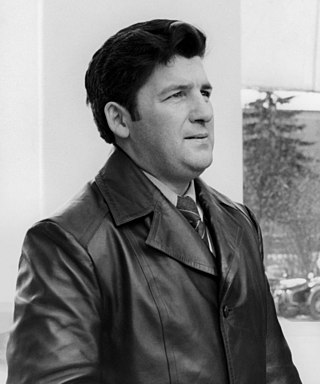
Pyotr Ilyich Klimuk is a former Soviet cosmonaut and the first Belarusian to perform space travel. Klimuk made three flights into space. From 1991 to 2003, he headed the Yuri Gagarin Cosmonaut Training Center.
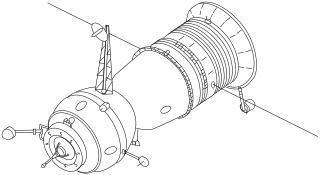
Soyuz 14 was a July, 1974, crewed spaceflight to the Salyut 3 space station. Soyuz 14 is also the name given to the Soyuz spacecraft which was used to bring the cosmonauts to and from the station. The mission was part of the Soviet Union's Almaz program to evaluate the military applications of crew spaceflight. The mission's crew members were cosmonauts Pavel Popovich and Yuri Artyukhin. At the time, the military nature of this mission and the station itself were not acknowledged by Soviet authorities.

Soyuz 28 was a March 1978 Soviet crewed mission to the orbiting Salyut 6 space station. It was the fourth mission to the station, the third successful docking, and the second visit to the resident crew launched in Soyuz 26.

Soyuz 24 was a February, 1977, Soviet mission to the Salyut 5 space station, the third and final mission to the station, the last purely military crew for the Soviets and the final mission to a military Salyut. The cosmonauts Viktor Gorbatko and Yuri Glazkov re-activated the station after toxic fumes had apparently terminated the mission of Soyuz 21, the previous crew.
Soyuz 25 was an October, 1977, Soviet crewed space flight, the first to the new Salyut 6 space station, which had been launched 10 days earlier. However, the mission was aborted when cosmonauts Vladimir Kovalyonok and Valery Ryumin failed to engage the docking latches of the station despite five attempts. Lacking sufficient fuel to attempt a dock at the other end of the station and with battery power for only two days, they returned to Earth.
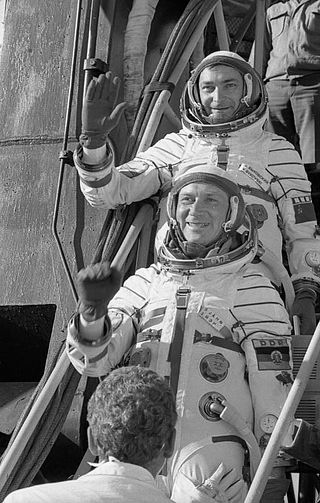
Soyuz 31 was a 1978 Soviet crewed space flight to the Salyut 6 space station. It was the seventh mission to and sixth successful docking at the orbiting facility. The Soyuz 31 crew were the second to visit the long-duration Soyuz 29 resident crew.

Soyuz 32 was a 1979 Soviet crewed space flight to the Salyut 6 space station. It was the eighth mission to and seventh successful docking at the orbiting facility. The Soyuz 32 crew was the third long-duration crew to man the space station.

Soyuz 35 was a 1980 Soviet crewed space flight to the Salyut 6 space station. It was the 10th mission to and eighth successful docking at the orbiting facility. The Soyuz 35 crew were the fourth long-duration crew to man the space station.

Soyuz 36 was a 1980 Soviet crewed space flight to the Salyut 6 space station. It was the 11th mission to and ninth successful docking at the orbiting facility. The Soyuz 36 crew were the first to visit the long-duration Soyuz 35 resident crew.

Soyuz T-2 was a 1980 Soviet crewed space flight to the Salyut 6 space station. It was the 12th mission to and 10th successful docking at the orbiting facility. The Soyuz T-2 crew were the second to visit the long-duration Soyuz 35 resident crew.

Soyuz 37 was a 1980 Soviet crewed space flight to the Salyut 6 space station. It was the 13th mission to and 11th successful docking at the orbiting facility. The Soyuz 37 crew were the third to visit the long-duration Soyuz 35 resident crew.
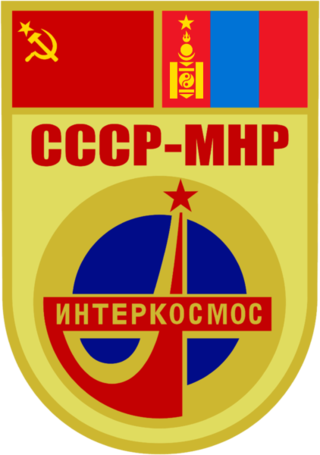
Soyuz 39 was a 1981 Soviet crewed space flight to the Salyut 6 space station. It was the fifteenth expedition, and carried the eighth international crew to the orbiting facility. The crew visited Vladimir Kovalyonok and Viktor Savinykh, who had reached Salyut-6 ten days prior.
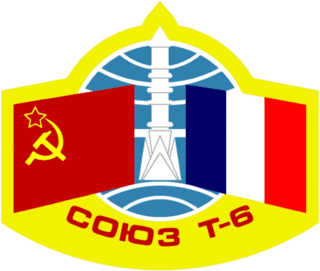
Soyuz T-6 was a human spaceflight to Earth orbit to the Salyut 7 space station in 1982. Along with two Soviet cosmonauts, the crew included a Frenchman, Jean-Loup Chrétien.

Zenon Jankowski is a retired fighter pilot, colonel of the Polish People's Army and astronaut. He was a reserve crew member of the 1978 Soyuz 30 space mission.
Salyut 6 EO-1 was a Soviet long duration space expedition, the first to dock successfully with the space station Salyut 6. The two person crew stayed were in space for a record setting 96 days, from December 1977 to March 1978. The expedition was the start of what would be the semi-permanent occupation of space by the Soviets.
